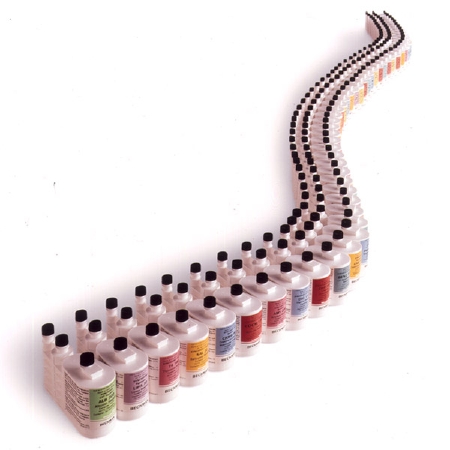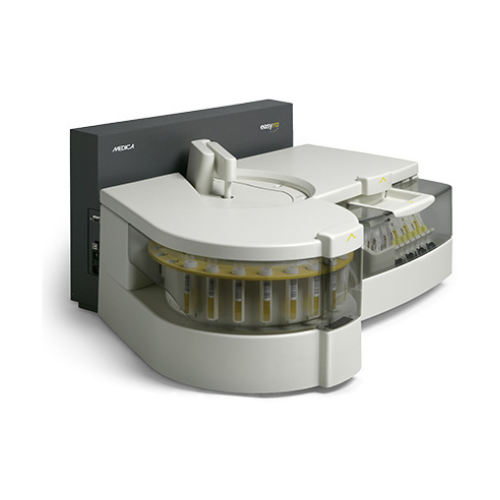For Business Use Only. Does Not Ship to Residential Addresses. For use inside an Analyzer, Sold Separately.
OSR6106 Olympus AMY (Amylase) Reagent, 4 x 40 mL
Product Code: OSR6106
Manufacturer: Beckman Coulter
Shipping Weight: 10.00lbs (4.54kg)
Specifications
Application: Reagent
Number of Tests: 240 Tests
Storage Requirement: Store at 2 to 8°C
Test Name: Amylase
Test Type: General Chemistry
UNSPSC Code: 41116004
Volume: 4 X 40 mL
Product Description
System reagent for the quantitative determination of α-Amylase in human serum and urine on Beckman Coulter AU analyzers. For in-vitro diagnostic use only.
Colorless; Clear; Liquid; Odorless
About α-Amylase
α-Amylase (EC 3.2.1.1) is found primarily in the pancreas and salivary glands. Elevated serum levels are associated with acute pancreatitis and other pancreatic disorders as well as mumps and bacterial parotitis.
Amylase activity in serum tends to increase rapidly after an attack of pancreatitis and may be demonstrated as early as six to eight hours after its onset. Levels stay elevated for one to three days and then return rapidly to normal, reflecting the efficient renal clearance of the enzyme.
Decreased amylase levels have been found in abscesses of the liver, acute hepatocellular damage, cirrhosis, cancer of the liver and bile duct, and cholecystitis. Amylase is a relatively small protein and is therefore filtered readily into the urine. The enzyme can be found in increased concentrations in the urine for longer periods of time than in the serum. An amylase content determined on a 2-hour urine collection is an excellent test for detecting pancreatitis.
Methodology
This Amylase procedure utilizes 2-chloro-4-nitrophenyl-α-D-maltotrioside (CNPG3) as substrate. This substrate reacts directly with α-Amylase and does not require the presence of ancillary enzymes. The release of 2-chloro-4-nitrophenol (CNP) from the substrate and the resulting absorbance increase per minute is directly related to the α-Amylase activity in the sample. The resulting increase in absorbance can be measured spectrophotometrically at 410/480nm.

Additional Information
Alpha-Amylase - Safety Data Sheet
Alpha-Amylase - Instructions for Use














